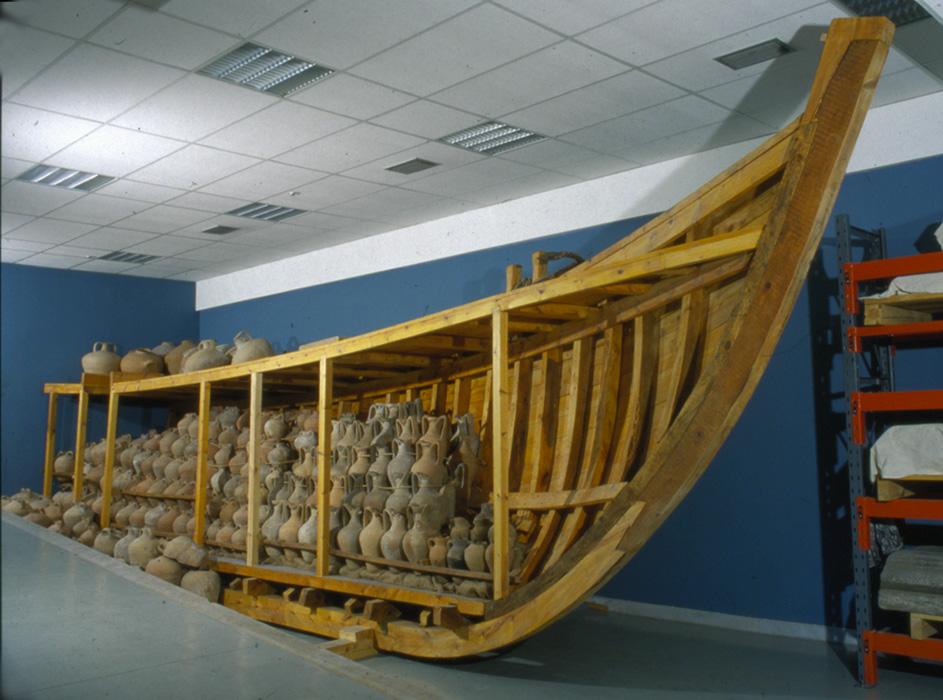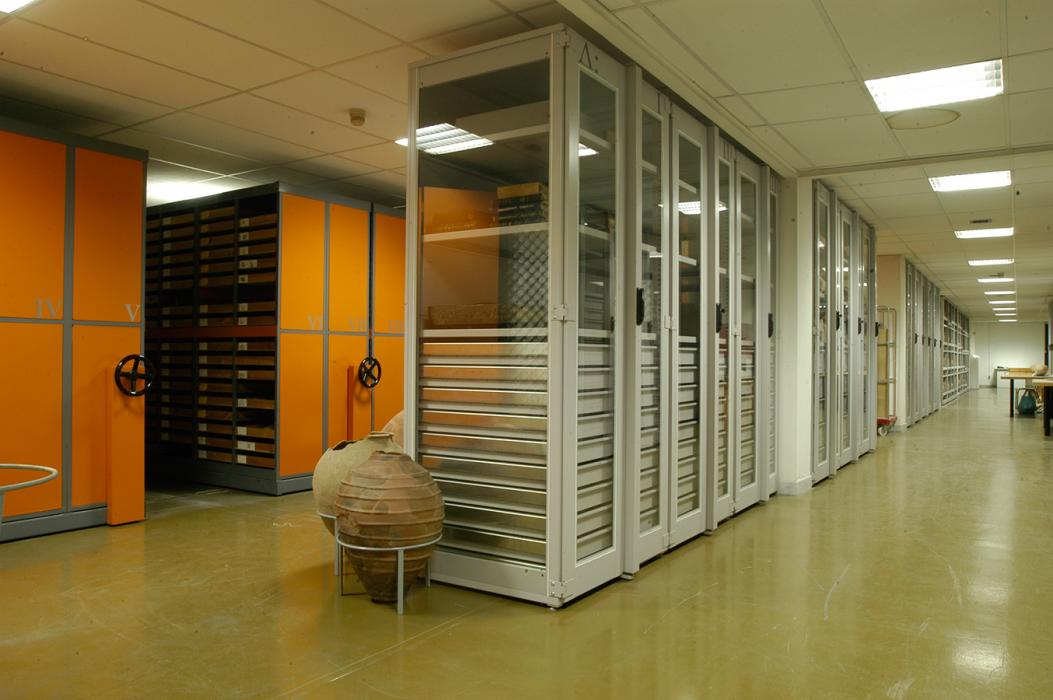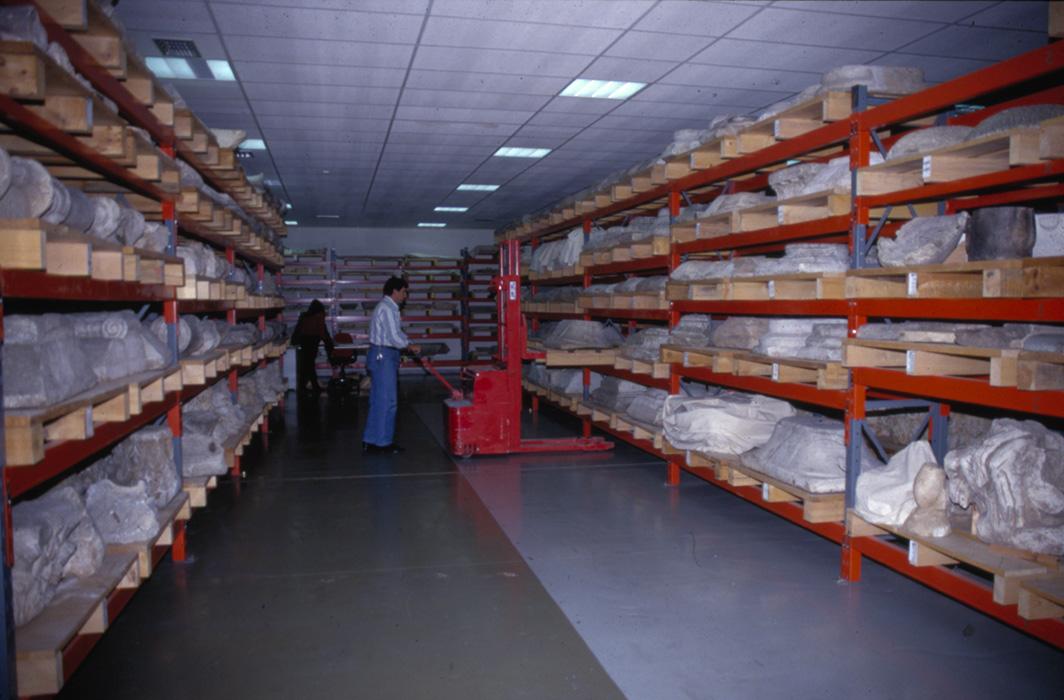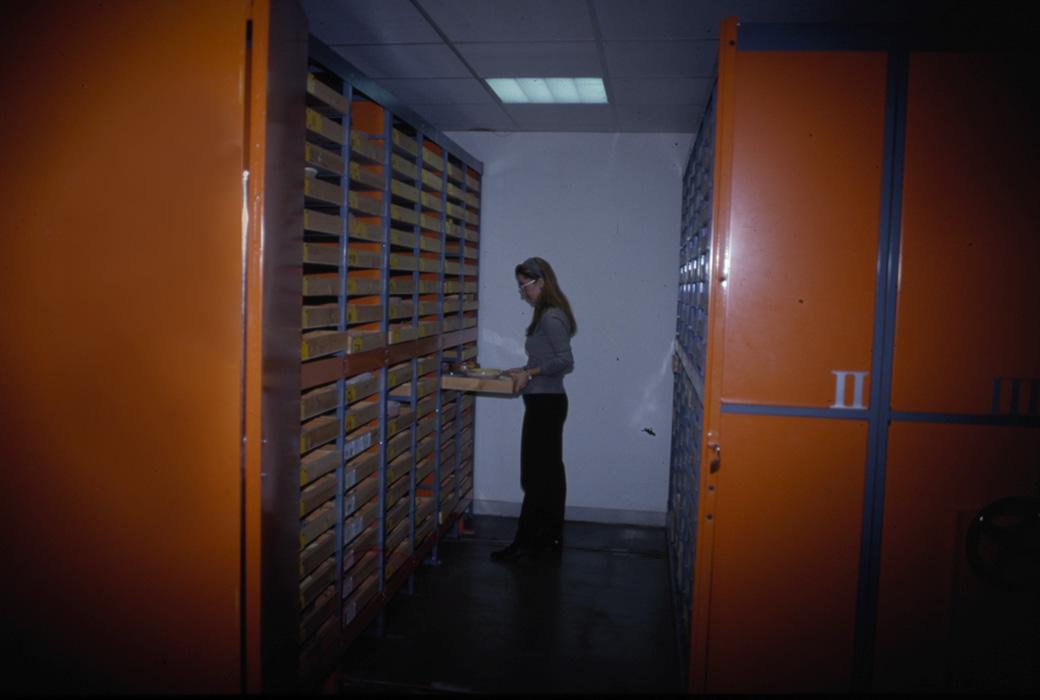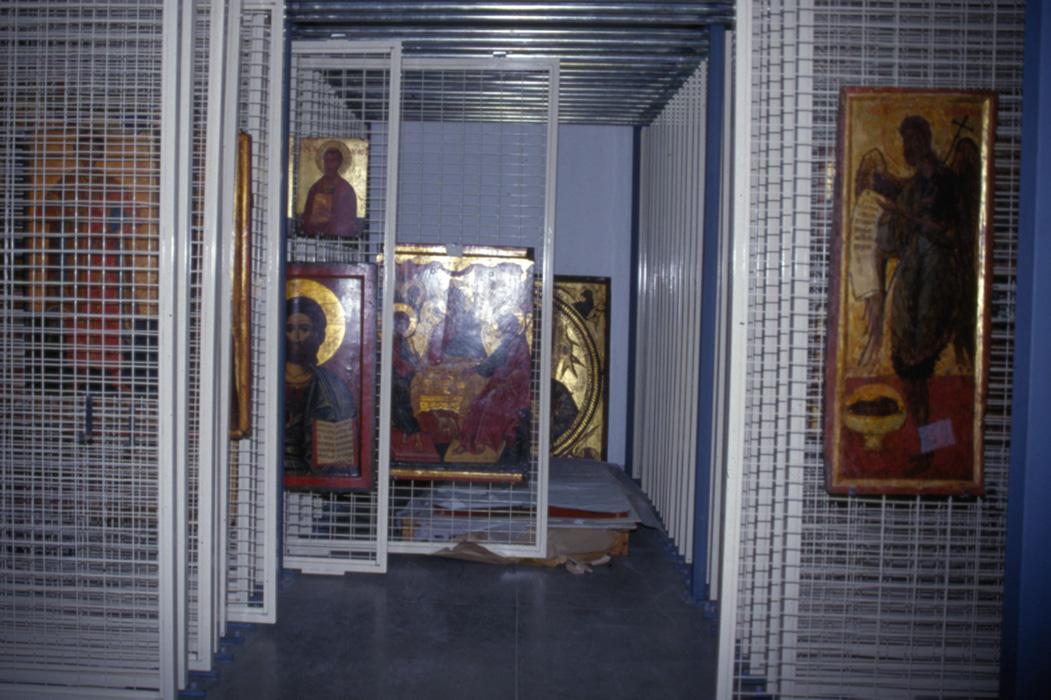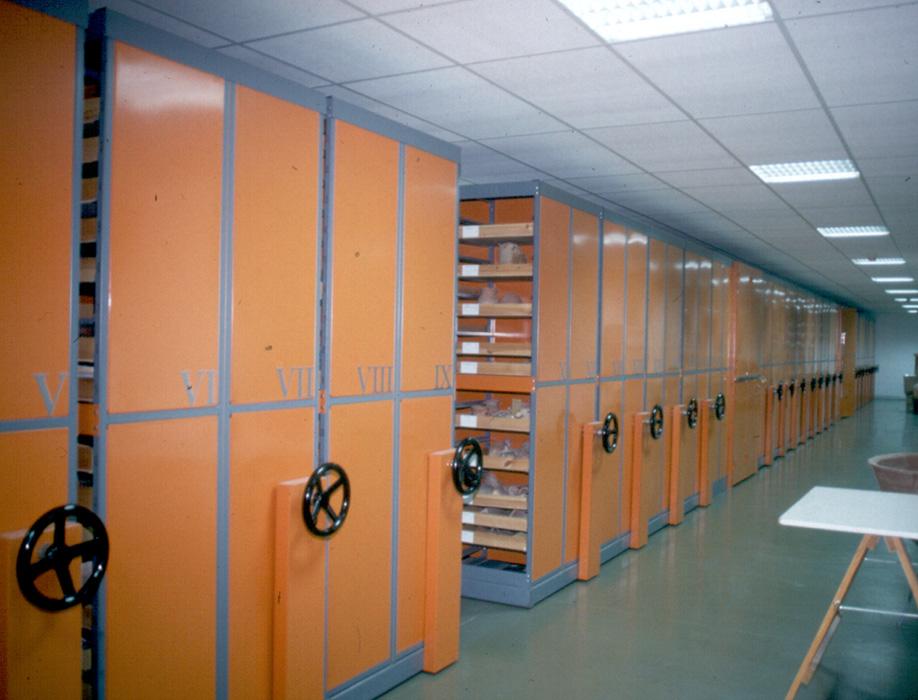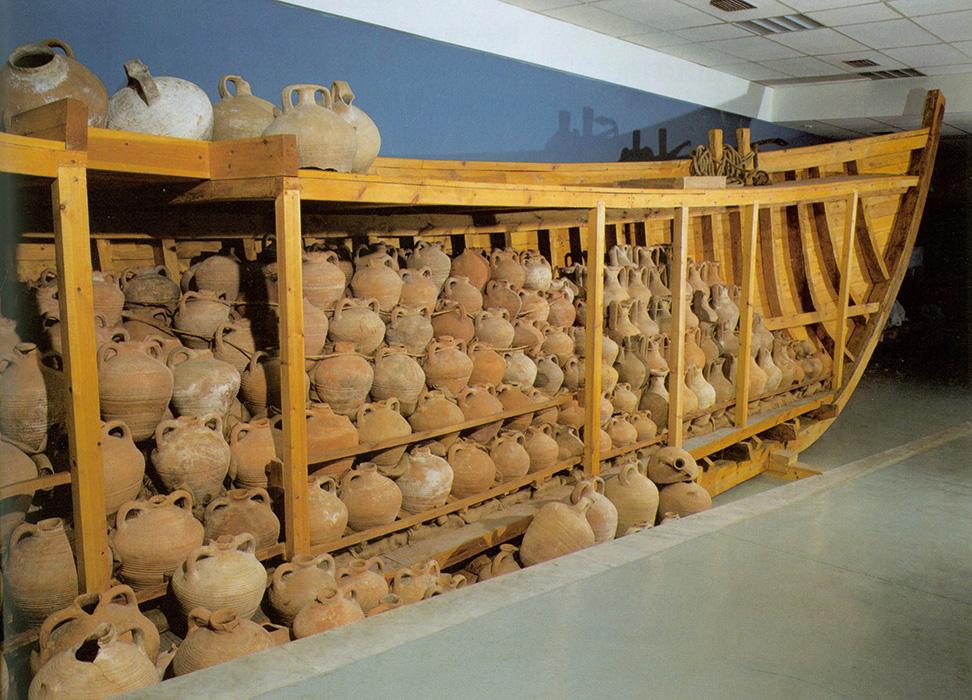This website uses cookies so that we can provide you with the best user experience possible. Cookie information is stored in your browser and performs functions such as recognising you when you return to our website and helping our team to understand which sections of the website you find most interesting and useful.
The Museum’s storerooms
Well organized and functional, the Museum’s storerooms contribute immensely to the proper operation of the Museum. Already in the architectural sketches of the building there were plans for storage rooms and for workshops (total surface 2.750 sq.m.). The storerooms (1.198, 55 sq.m.) were designed so that various kinds of archaeological finds can be stored in conditions that meet international specifications. The archaeological storerooms have adopted solutions used for industrial storage, such as storing sculptures on shelves on pallets that can be moved by forklift trucks and suspending icons and mosaics on vertical sliding frames. For the ceramics, the appropriately modified system of rolling shelves was used; this is the system, which is used in libraries.
A more unconventional mode of storage has been adopted for amphoras. A replica of the hull of a Byzantine ship was constructed with the sponsorship of the “PAPASTRATOS” Company, inside which the amphoras were stacked one on top of another, exactly as they would have been stacked in the hold of a commercial ship in antiquity. The system was proved ideal, since it secured space saving and also stability for the vessels made of clay.
All the above create the most suitable conditions for keeping the artifacts and for the work of the staff, while they offer opportunities for educational activities. Our plans for the future include the reorganization of the storerooms aiming to save space, and to create sections for education and interaction with the public.



